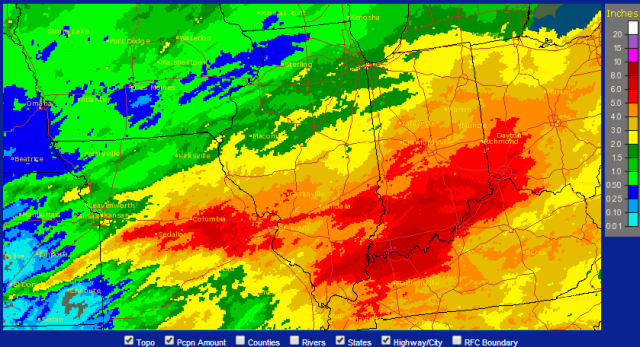After a wet start to the 2014 growing season, we have seen a significant drop in rainfall across parts of northern and central Illinois in the last few weeks. Here is the 30-day rainfall as a percent of average. Areas in the orange are 25 to 75 percent of average while the areas in red are less than 25 percent of average. There are reports of soil moisture running low in some areas. On the other hand, southern Illinois has received above-average rainfall in the last 30 days.
Besides the switch from too wet to too dry in northern and central Illinois, and too much rain in southern Illinois, the other issue is that temperatures have been running about 4 degrees below average for the past 30 days. We are getting some heat this week. However, the longer-term forecasts indicate a return to cooler temperatures and more rain after this week through September 1.
If you look at the last 90 days the heavier rains in June and early July masks the recent dryness (map below). In fact, at the 90 day time scale rainfall in Illinois is generally at or above long-term average (1981-2010), as denoted by the grays and greens. This is one of the challenges of drought monitoring – sorting out short-term dryness versus long-term wetness or vice versa.










